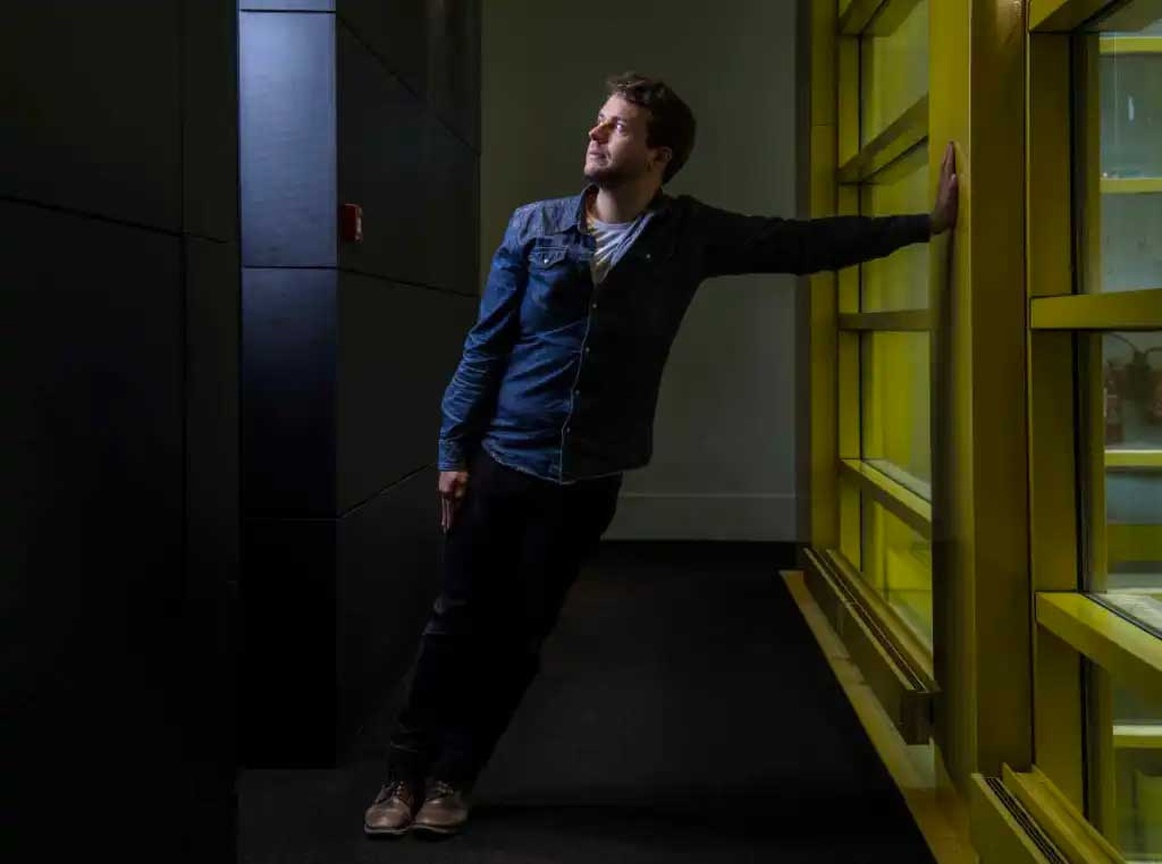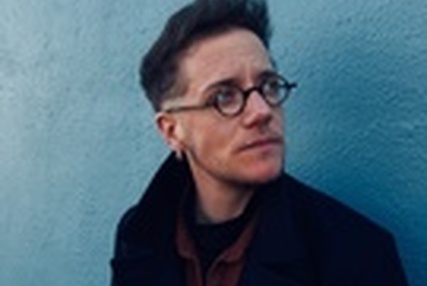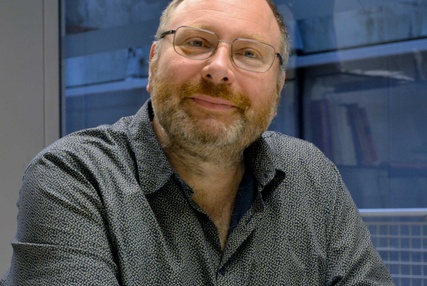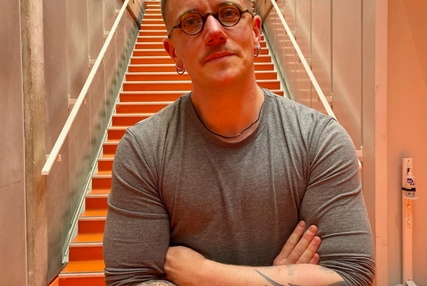Après une année sabbatique, le chercheur, réalisateur en informatique musicale et musicien Jérôme Nika a réintégré en ce début 2024 les équipes de recherche de l’Ircam. Non sans un petit changement toutefois, puisque, s’il continue à explorer les thématiques de recherche sur l’interaction humain-machine qui l’ont conduit à développer l’environnement Dicy2 au sein de l’équipe Représentations musicales, il la quitte pour rejoindre l’équipe Interaction son musique mouvement, et se lance à présent dans de nouvelles aventures sur les modèles interactifs et génératifs pour la création en les abordant sous l’angle de la « lutherie numérique» et de la composition d’interactions. C'est dans ce contexte qu’il contribue à la résidence en recherche artistique de Sasha Blondeau autour de l’élaboration d’un modèle de prototypage dramaturgique musical.
Cet apparent changement de fusil d’épaule pourra en étonner plus d’un : on passe ainsi d’une recherche orientée vers l’improvisation à une autre orientée sur la formalisation à haut niveau du discours musical. Jérôme Nika y voit en revanche une continuité quasi parfaite : « Même si les recherches que j’ai menées jusqu’à maintenant ont donné naissance à des outils comme Dicy2 – qui sont plutôt déployés dans le champ de l’improvisation, avec à la clef ce terme un peu fourre-tout « d’IA » – je me concentrais avant tout sur la formalisation des contrôles et de l’écriture du discours électronique.
Ce qui me passionne le plus dans les collaborations que je noue avec des artistes sur le long terme et qui font appel à ces outils, au moins autant que l’interaction avec la machine, c’est la « composition » de son comportement : la constitution du matériau avec laquelle elle joue, la manière dont on veut qu’elle génère son discours et selon quel mode d’écoute du partenaire, etc. Le sujet de ma thèse, c’était la modélisation et l’utilisation de scénarios ou de structures sous-jacentes dans l’improvisation – je me plaçais donc déjà à l’échelle de la narration, quand bien même locale.
Au reste, contrairement à la vision répandue qui voudrait que l’improvisation soit une création de l’instant, la philosophie de mes travaux précédents était de la modéliser comme une mobilisation en temps réel de processus hors temps – donc d’ordre compositionnel. D’où, d’ailleurs, la nécessité « d’apprendre » à improviser.
« L’improvisation exige une projection à court ou moyen terme – souvent, dans certains répertoires du moins, selon des structures rythmiques ou harmoniques préétablies. Bref, l’improvisation n’est qu’un des cas d’utilisation des outils que je développais jusqu’ici, la composition en est un autre : ils ont d’ailleurs été investis par des artistes non improvisateurs. »
 Jérôme Nika © William Beaucardet
Jérôme Nika © William Beaucardet
De l’avis général des compositrices et compositeurs qui ont travaillé avec Dyci2, l’outil invite à une grande réflexivité : « À chaque fin de projet de création, on m’a dit : « J’ai adoré ». Mais, plus que le résultat musical, c’est le processus qui leur avait plu : le fait de devoir « apprendre » des choses à la machine les a forcés à formaliser et réfléchir à la démarche même de création. Et à comprendre que ce à quoi ils aspiraient, c’était de dessiner un certain type de trajectoire, dans une certaine dimension musicale. »
La résidence que porte Sasha Blondeau autour de la dramaturgie musicale entre ainsi profondément en résonance avec les préoccupations du chercheur qu’il a toujours été.
« J’irais même plus loin, remarque Jérôme Nika : j’ai le sentiment que ce que Sasha fait avec ses complexes simpliciaux et ce que font les modèles que j’ai développés relèvent de la même démarche, métaphoriquement du moins. Sasha élabore des modèles d’espace et imagine des parcours au sein de cette matrice, tandis que Dyci2, par exemple, se constitue un module de mémoire, le tout étant de savoir selon quelles modalités on s’y promène. Dans un cas comme dans l’autre, il s’agit de modéliser une pensée de la forme, une pensée de la narration, au plus haut niveau. »
N’allons toutefois pas penser que Jérôme Nika est prêt à dégainer du code pour offrir un outil ad hoc à Sasha et aux autres compositrices et compositeurs intéressés, dès la fin de la résidence. Certes, le but de cette résidence est double pour Nika : formaliser des pratiques, de manière plus ou moins rigoureuse, afin de tenter d’établir une ébauche de taxonomie, d’une part, et prototyper des outils informatiques, d’autre part. Mais il reste cependant lucide et modeste quant à ce deuxième objectif :
« Un de mes axes de recherche à venir est d’opérer un retour à la Composition Assistée par Ordinateur (CAO), mais une CAO qui internaliserait, dans ses notations et processus, le projet artistique. D’où la nécessité d’aller à la rencontre des compositeurs pour comprendre leurs pensées de la forme, et tenter d’en dégager des invariants. Ce n’est qu’à partir de là que l’on pourra développer éventuellement des outils, par exemple pour aider à faire des allers-retours entre une esquisse de formule et sa modification par un processus donné. Malgré ce qu’on pourrait imaginer au regard de mes travaux antérieurs, je ne suis pas un partisan acharné du machine learning et autres intelligences artificielles génératrices de musique au kilomètre. Mais, élaborer un outil qui permettrait à un compositeur de s’approprier un matériau donné, de modéliser les différents paramètres de sa structure au moyen de symboles haut niveau, pour ensuite le travailler et le développer, voilà qui est bien plus enthousiasmant ! »
Jérôme Nika ne cache pas son bonheur de travailler sur la description de la musique elle-même : par la nature du matériau, ou par sa fonction (pour faire un parallèle avec le travail du scénariste : une scène particulière joue un rôle dans la narration, pour introduire un personnage, ou orienter l’intrigue), ou par d’éventuelles relations de couplage, par exemple : « Imaginons deux lignes musicales, que j’appellerais A et B. Je veux créer du B, mais plutôt que de décrire directement du B, je décris du A, et les relations entre A et B. »
Mais, plus encore que cette démarche quasi musicologique, c’est de la confrontation avec les compositrices et compositeurs qui participeront aux travaux qu’il attend beaucoup : « Toutes ces pistes que j’aimerais explorer sont-elles vraiment pertinentes ? Les aideront-elles ? Et, surtout, quelles autres pistes de travail cela ouvrira-t-il ? »
Car il faut bien se rappeler que, en matière de recherche, qu’elle soit scientifique, artistique ou métaphysique, chaque réponse apportée soulève dix nouvelles questions, parfois bien plus vastes…
![]()
Propos recueillis par Jérémie Szpirglas





